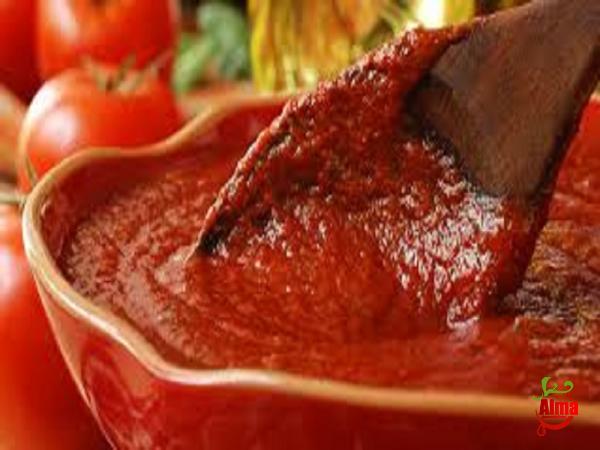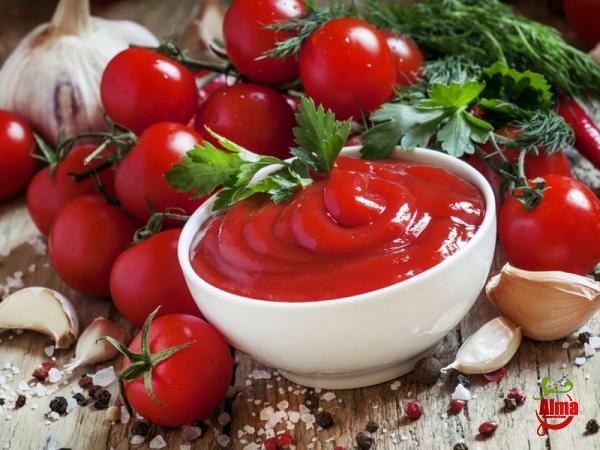Easy Tomato Paste Purchase Price + Quality Test: A Comprehensive Summary Introduction: Tomato paste is a staple ingredient used in various culinary preparations, including sauces, soups, and stews. However, purchasing tomato paste can sometimes be a daunting task as there are numerous brands and varieties available on the market. To ensure you are getting the best value for your money, it is essential to consider both the purchase price and quality of tomato paste. In this summary, we will explore the factors to consider when purchasing tomato paste, including pricing strategies, quality indicators, and a comprehensive quality test. Factors to Consider When Purchasing Tomato Paste: 1. Ingredient Quality and Processing: When buying tomato paste, it is crucial to examine the quality of the ingredients used and how they are processed. Ideally, the tomato paste should be made from ripe, high-quality tomatoes without any additives or preservatives. Check the product labels for any additional ingredients that may affect the taste or quality of the paste. 2. Packaging: Packaging plays a vital role in preserving the freshness and quality of tomato paste. Opt for tomato paste that comes in a sturdy, airtight container, such as a can or a tube, to prevent spoilage or contamination. Avoid purchasing tomato paste in jars with metal lids, as they may corrode over time. 3. Shelf Life and Expiry Date: Always check the expiry date on the packaging before purchasing tomato paste. Ensure that the product has a reasonable shelf life to ensure long-lasting freshness. Typically, tomato paste can last for up to two years if stored properly, but it is still advisable to consume it within its expiration date for optimal taste and quality.

tomato paste
 4. Price Comparison: Comparing the prices of different tomato paste brands is essential to determine the best value for your money. However, it is not advisable to solely rely on the cheapest option without considering the quality. Look for a balance between price and quality to ensure that you are getting a fair deal. Quality Indicators for Tomato Paste: 1. Color and Consistency: High-quality tomato paste should exhibit a vibrant red color without any signs of discoloration or browning. The consistency should be thick, smooth, and free of any lumps or fibrous material. Avoid tomato paste that appears watery or grainy, as these are indicators of lower quality. 2. Taste and Aroma: Performing a taste test is a crucial step in assessing the quality of tomato paste. It should have a concentrated tomato flavor that balances sweetness and acidity. Avoid tomato paste that tastes overly sour, bitter, or artificial. Additionally, it should have a fresh and appetizing aroma that resembles ripe tomatoes. 3. Density and Texture: Genuine tomato paste should have a dense and sticky texture due to its high concentration of tomato solids. It should easily adhere to a spoon or spread gently on a surface. Avoid tomato paste that appears loose or runny, as this indicates a lower quality product. 4. Source and Production Techniques: The country of origin and the production techniques involved can sometimes be indicative of the quality of tomato paste. Certain regions, such as Italy, are renowned for producing high-quality tomato products due to their favorable climate and traditional production methods. Understanding the sourcing and production processes can help make an informed decision while purchasing tomato paste.
4. Price Comparison: Comparing the prices of different tomato paste brands is essential to determine the best value for your money. However, it is not advisable to solely rely on the cheapest option without considering the quality. Look for a balance between price and quality to ensure that you are getting a fair deal. Quality Indicators for Tomato Paste: 1. Color and Consistency: High-quality tomato paste should exhibit a vibrant red color without any signs of discoloration or browning. The consistency should be thick, smooth, and free of any lumps or fibrous material. Avoid tomato paste that appears watery or grainy, as these are indicators of lower quality. 2. Taste and Aroma: Performing a taste test is a crucial step in assessing the quality of tomato paste. It should have a concentrated tomato flavor that balances sweetness and acidity. Avoid tomato paste that tastes overly sour, bitter, or artificial. Additionally, it should have a fresh and appetizing aroma that resembles ripe tomatoes. 3. Density and Texture: Genuine tomato paste should have a dense and sticky texture due to its high concentration of tomato solids. It should easily adhere to a spoon or spread gently on a surface. Avoid tomato paste that appears loose or runny, as this indicates a lower quality product. 4. Source and Production Techniques: The country of origin and the production techniques involved can sometimes be indicative of the quality of tomato paste. Certain regions, such as Italy, are renowned for producing high-quality tomato products due to their favorable climate and traditional production methods. Understanding the sourcing and production processes can help make an informed decision while purchasing tomato paste.
Specifications of tomato paste
 Quality Test Procedures for Tomato Paste: To ensure a transparent and rigorous quality assessment, the following procedures can be followed: 1. Visual Inspection: Examine the tomato paste for any color deviations, consistency issues, or foreign particles. Note any discrepancies that may indicate a lower quality product. 2. Smell Test: Inhale the aroma of the tomato paste to determine if it is fresh, fruity, and appetizing. Any unpleasant or off-putting smells may be an indication of poor quality or spoilage. 3. Taste Test: Take a small portion of the tomato paste and taste it. Assess its flavor profile, texture, acidity, and sweetness levels. Compare it to your expectations of a high-quality tomato paste. 4. Texture Assessment: Check the consistency of the tomato paste by observing its ability to stay cohesive, not separating or appearing watery. Assess its viscosity and stickiness. 5. Comparisons: Conduct blind taste tests with various brands of tomato paste to compare their qualities side by side. Note any distinct differences in taste, texture, and overall quality.
Quality Test Procedures for Tomato Paste: To ensure a transparent and rigorous quality assessment, the following procedures can be followed: 1. Visual Inspection: Examine the tomato paste for any color deviations, consistency issues, or foreign particles. Note any discrepancies that may indicate a lower quality product. 2. Smell Test: Inhale the aroma of the tomato paste to determine if it is fresh, fruity, and appetizing. Any unpleasant or off-putting smells may be an indication of poor quality or spoilage. 3. Taste Test: Take a small portion of the tomato paste and taste it. Assess its flavor profile, texture, acidity, and sweetness levels. Compare it to your expectations of a high-quality tomato paste. 4. Texture Assessment: Check the consistency of the tomato paste by observing its ability to stay cohesive, not separating or appearing watery. Assess its viscosity and stickiness. 5. Comparisons: Conduct blind taste tests with various brands of tomato paste to compare their qualities side by side. Note any distinct differences in taste, texture, and overall quality.
buy tomato paste
 Conclusion: Acquiring high-quality tomato paste at a reasonable price requires careful consideration of various factors, including ingredient quality, packaging, shelf life, and pricing strategies. Conducting a quality test through visual inspection, smell test, taste test, and texture assessment can further assist in determining the best tomato paste for your culinary needs. By taking these steps, you can ensure that you are making an informed decision and ultimately enhance the flavors of your culinary creations.
Conclusion: Acquiring high-quality tomato paste at a reasonable price requires careful consideration of various factors, including ingredient quality, packaging, shelf life, and pricing strategies. Conducting a quality test through visual inspection, smell test, taste test, and texture assessment can further assist in determining the best tomato paste for your culinary needs. By taking these steps, you can ensure that you are making an informed decision and ultimately enhance the flavors of your culinary creations.









Your comment submitted.